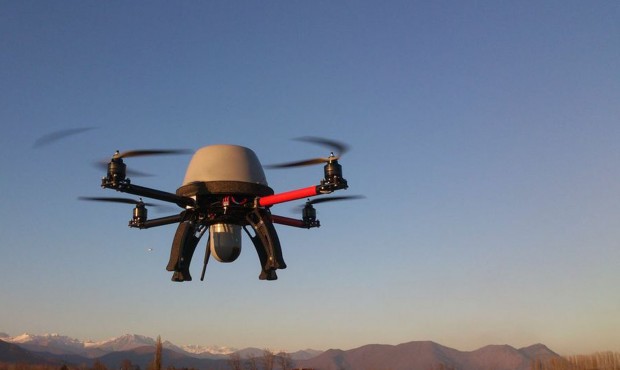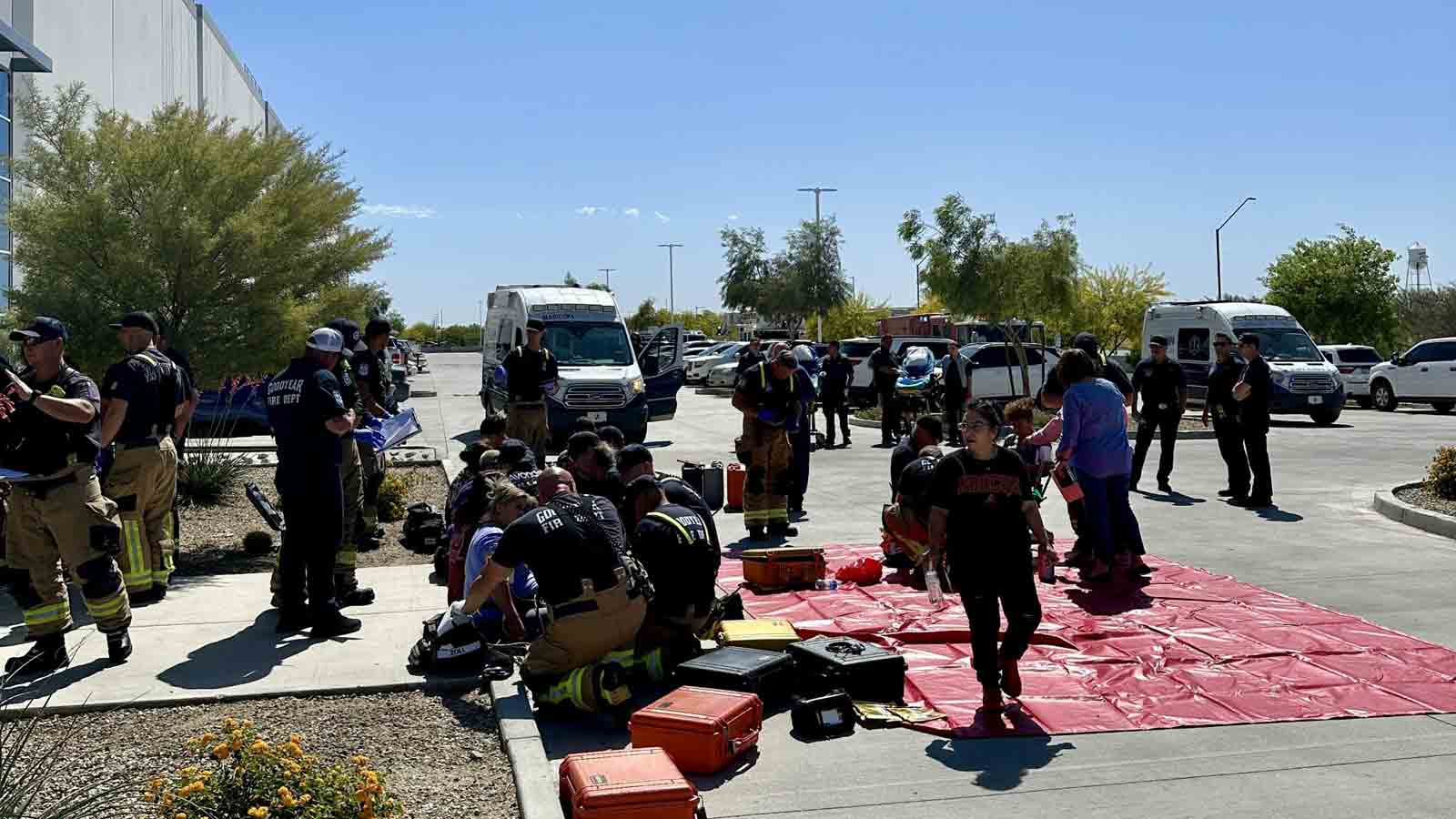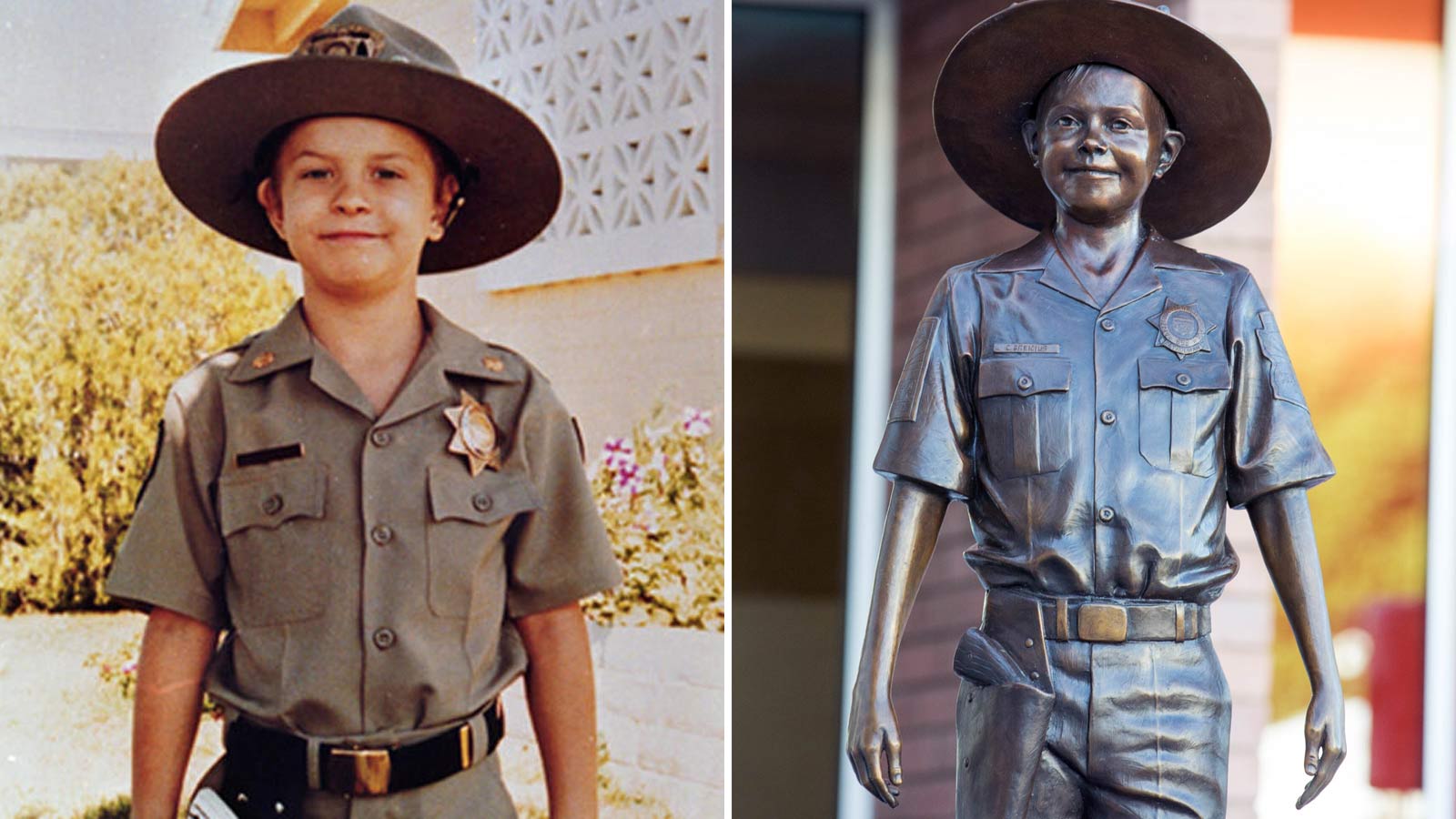Experts see farming as next big use for drones
May 9, 2013, 6:39 AM | Updated: 6:43 am

WASHINGTON — Drones numbering in the tens of thousands will be in the skies by 2030, the Federal Aviation Administration predicts. But where some may fear precision weapons or flying spy cameras, Steve Markofski sees flying tractors.
Markofski, a new business planner for Yamaha, hopes to repeat the success here that the company has had in Japan with RMAX, an unmanned aerial vehicle that sprays fertilizer and herbicides over farms there.
“In Japan, the RMAX has more in common with a tractor than it does with a helicopter,” said Markofski, of the remote-controlled helicopter that has been used in that country for two decades.
Agriculture is expected to be one of the biggest potential markets for drones in the U.S., as the FAA develops regulations to open the skies by 2015 and commercial uses grow for unmanned aerial vehicles — UAVs, or drones.
In Arizona, where thousands are already employed in drone production or related industries, new commercial markets could mean new jobs.
The Association for Unmanned Vehicle Systems International predicted high demand for agriculture drones that will be able to spray crops with herbicide and pesticide and offer access to cheap, timely data on crop health.
“The case for precision agriculture is one based on economic efficiency,” said Darryl Jenkins, author of the association’s March report.
He said drones will be used to survey huge farms and pinpoint areas in need of fertilizer and pesticides to prevent waste. Current crop surveys and dusting can be done with planes or helicopters, but drones will make the technology more affordable and accessible.
Robert Blair, an Idaho wheat farmer, started looking into unmanned aircraft as a surveying solution in 2006, after spending $9,000 on a single manned aircraft flight and then waiting weeks to get the data.
After some experimenting with a kit, he decided to build his own. The result is a drone that weighs less than 10 pounds, has a 9-foot wingspan and gives him timely information about disease, weeds and water on his 1,500 acres that he could not otherwise get.
Blair estimates that, including the cost of all the trade shows he attended to do research, he has put about $300,000 into his UAV. But besides being faster, it is cheaper to operate a drone than it would be to hire a plane and pilot to do the same job, he said.
Even though the FAA bans flying for commercial purposes, it allows remote-control flying by hobbyists, rules that Blair follows when surveying his land. Since seeing the benefits of drone farming, he has lobbied his state senators and the FAA to make sure large agricultural trade groups have a seat at the table as regulations are developed.
Blair said he is frustrated by how far the U.S. has fallen behind Japan and other countries, as it waits for the FAA to write regulations for the new industry.
“This is the country that develops the technology, but we still have the bureaucracy not allowing us to use it,” he said.
Blair believes that unmanned aircraft are the missing piece in precision agriculture that will take the world to the next level of production necessary to feed an exploding population, and that is why he continues to use them.
“There are a few points in time when a person can effect positive change in an industry that they love,” he said.
He also feels as if agriculture drones should be managed separately from drones doing public safety work, because he believes the farm UAVs pose less threat to privacy and safety.
Both Blair and the unmanned vehicles association point to Japan as a model for successful use of unmanned aircraft in agriculture. It worked well, they said, because the Japanese agriculture ministry commissioned the technology rather than inhibiting commercialization of drones.
Markofski said the ministry had identified an aging farming population as a problem and wanted to mechanize farming to encourage younger generations to stay on family farms. It asked Yamaha to start developing an unmanned aircraft in 1983.
That led to the development in 1991 of an unmanned helicopter to spray both herbicide and fertilizer. Privacy was not a concern at the time, because farming was the only use for unmanned aircraft.
Now known as the RMAX, the Yamaha helicopters are 9 feet long and 200 pounds. They are leased to trained operators who are hired by farmers, as crop dusters are in the U.S.
Precision application in Japan is key because farms are about five acres in size and using a large helicopter leads to spreading fertilizers over homes.
Since the helicopters were first introduced, their use has spread from 100,000 acres in 1991 to a little under 2.5 million acres, or about 40 percent of the country’s rice fields.
Yamaha has since exported the RMAX to South Korea and will start exporting them to Australia this year. Markofski said the company hopes to enter this country in 2015, when Yamaha will target medium-sized U.S. crops such as grapes, almonds pistachios and, of course, rice.
Jenkins predicts there will be more opportunity for entrepreneurs interested in producing and providing services with small drones rather than competing with large established companies.
One of those is Rory Paul, who started Volt Aerial Robotics in Missouri in hopes of using unmanned aircraft to survey crops for farmers.
Paul is designing and selling his drones, even as the FAA works on regulations, but he sees opportunity for the industry through precision application of herbicide and fertilizer. Even though a farmer may only reduce his input of herbicides and fertilizers by 1 percent and boost his output by 1 percent, that will multiply across the industry.
“You’re talking about billions of dollars of dividends through this technology,” Paul said.








